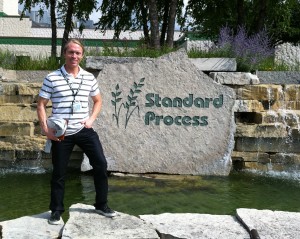 I recently had the pleasure to visit the Standard Process (SP) manufacturing plant and farm outside of Milwaukee, Wisconsin. As I regularly take SP products and prescribed them to my animal patients, I jumped at the opportunity for a firsthand look at the resources and production behind SP supplements.
The sparkling clean plant greeted the other veterinarians and I, including my associates from the Veterinary Cancer Group, Mary Davis and Sara Fiocchi
The manufacture of SP dietary supplements, from whole food origin to packaged product, is an extensive and complicated process. Here are some interesting insights and experiences from the plant tour:
I recently had the pleasure to visit the Standard Process (SP) manufacturing plant and farm outside of Milwaukee, Wisconsin. As I regularly take SP products and prescribed them to my animal patients, I jumped at the opportunity for a firsthand look at the resources and production behind SP supplements.
The sparkling clean plant greeted the other veterinarians and I, including my associates from the Veterinary Cancer Group, Mary Davis and Sara Fiocchi
The manufacture of SP dietary supplements, from whole food origin to packaged product, is an extensive and complicated process. Here are some interesting insights and experiences from the plant tour: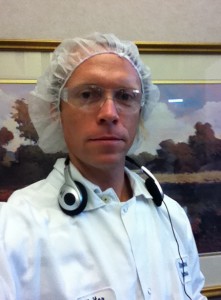 2-2.5 million bottles of a particular product are available for dispensation pending the popularity of a product and the growing season of its’ components.
SP uses 4-5 mixers capable of mixing 5000 pounds of product in 5 minutes.
Tablet presses are capable of producing up to 900,000 tablets per hour.
Capsuling of granulated supplements occurs at a rate of 150,000 per hour in gelatin or vegetable (cellulose) casings.
Natural binders, such as honey and Arabic gum, are coated over tablets to hold components together (using a fluid bed granulator).
Bacterial contamination, such as Staph, Listeria, E coli, and Salmonella may be found on raw materials, but is eliminated through low heat drying and vacuuming processes.
An average of 6 trials (test processes) occurs before a final product goes to market.
"Wellness at Work" is emblazoned on the wall and actively practiced by SP employees. Exercise and stretching guides are clearly posted and detail techniques to prevent repetitive motion injuries. Chiropractic treatments, physical therapy, and fitness facility access are offered on site on a complimentary basis to promote healthy and productive workers (I envy!).
The SP plant tour concluded at the Dr Royal Lee memorial library, where his inventions and patented devices (endocardiograph, which is similar to an electrocardiogram and the wheat flower mill) were prominently displayed. Lee was born in 1895 and worked many trades during his multifaceted career. As an engineer, Lee had over 34 patents, including governors for controlling the speed of electric motors, such as those used in dental drills. Lee's interest in the oral cavity motivated him to become a dentist and deepened his awareness of the connection between the health of the mouth in correlation to the internal organs. Lee went on to found Standard Process in 1929.
2-2.5 million bottles of a particular product are available for dispensation pending the popularity of a product and the growing season of its’ components.
SP uses 4-5 mixers capable of mixing 5000 pounds of product in 5 minutes.
Tablet presses are capable of producing up to 900,000 tablets per hour.
Capsuling of granulated supplements occurs at a rate of 150,000 per hour in gelatin or vegetable (cellulose) casings.
Natural binders, such as honey and Arabic gum, are coated over tablets to hold components together (using a fluid bed granulator).
Bacterial contamination, such as Staph, Listeria, E coli, and Salmonella may be found on raw materials, but is eliminated through low heat drying and vacuuming processes.
An average of 6 trials (test processes) occurs before a final product goes to market.
"Wellness at Work" is emblazoned on the wall and actively practiced by SP employees. Exercise and stretching guides are clearly posted and detail techniques to prevent repetitive motion injuries. Chiropractic treatments, physical therapy, and fitness facility access are offered on site on a complimentary basis to promote healthy and productive workers (I envy!).
The SP plant tour concluded at the Dr Royal Lee memorial library, where his inventions and patented devices (endocardiograph, which is similar to an electrocardiogram and the wheat flower mill) were prominently displayed. Lee was born in 1895 and worked many trades during his multifaceted career. As an engineer, Lee had over 34 patents, including governors for controlling the speed of electric motors, such as those used in dental drills. Lee's interest in the oral cavity motivated him to become a dentist and deepened his awareness of the connection between the health of the mouth in correlation to the internal organs. Lee went on to found Standard Process in 1929.
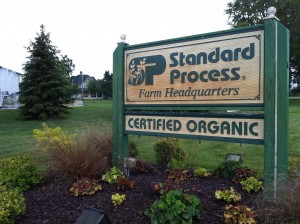 From the manufacturing plant, we ventured to the SP organic farm. Christine Mason provided us with an insightful look into the living fields that produce the high quality raw materials that go into SP products. Evidently, Wisconsin is the second most organic state in regards to food production (livestock and vegetables).
From the manufacturing plant, we ventured to the SP organic farm. Christine Mason provided us with an insightful look into the living fields that produce the high quality raw materials that go into SP products. Evidently, Wisconsin is the second most organic state in regards to food production (livestock and vegetables).
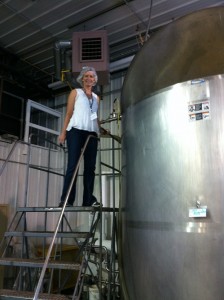 We witnessed the production of buckwheat juice from the field to the machinery that extracts the liquid and leaves behind material for fertilizer. SP uses 100% certified organic, including manure fertilizer. SP’s “green manure” is completely vegetable based and is lovingly crafted from legumes and other plant material.
Besides, the ingredients for SP supplements, the organic farm provides maize and pumpkins for local organic chicken farmers and seasonal festivities, respectively.
My time in Wisconsin also included interactive lectures from veterinarian, Tom Cameron and other SP affiliates which yielded a greater understanding of how to incorporate SP products into my veterinary practice.
We witnessed the production of buckwheat juice from the field to the machinery that extracts the liquid and leaves behind material for fertilizer. SP uses 100% certified organic, including manure fertilizer. SP’s “green manure” is completely vegetable based and is lovingly crafted from legumes and other plant material.
Besides, the ingredients for SP supplements, the organic farm provides maize and pumpkins for local organic chicken farmers and seasonal festivities, respectively.
My time in Wisconsin also included interactive lectures from veterinarian, Tom Cameron and other SP affiliates which yielded a greater understanding of how to incorporate SP products into my veterinary practice.
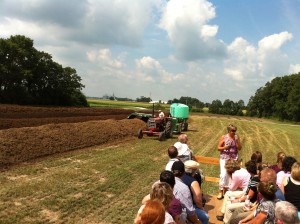 Having toured SP’s manufacturing plant and organic farm, I feel even more certain of the high quality products my dog (Cardiff, who takes the canine formulas) and consumes and that I recommend to my veterinary patients.
Please feel free to leave your comments or communicate with me through email (patrick@patrickmahaney.com) or Twitter (@PatrickMahaney).
Thank you for reading my article. To receive my next veterinary posting via email, please press the “Don’t Miss a Blog Post” button on the right upper corner of this page or follow this link.
Make sure to follow my adventures in veterinary medicine by friending Patrick Mahaney: Veterinarian Acupuncture Pain Management for Your Pets on Facebook.
Copyright of this article (2011) is owned by Dr. Patrick Mahaney, Veterinarian and Certified Veterinary Acupuncturist. Republishing any portion of this article must first be authorized by Dr. Patrick Mahaney. Republishing any portion of this article must first be authorized by Dr. Patrick Mahaney. Requests for republishing must be approved by Dr. Patrick Mahaney and received in written format.
Having toured SP’s manufacturing plant and organic farm, I feel even more certain of the high quality products my dog (Cardiff, who takes the canine formulas) and consumes and that I recommend to my veterinary patients.
Please feel free to leave your comments or communicate with me through email (patrick@patrickmahaney.com) or Twitter (@PatrickMahaney).
Thank you for reading my article. To receive my next veterinary posting via email, please press the “Don’t Miss a Blog Post” button on the right upper corner of this page or follow this link.
Make sure to follow my adventures in veterinary medicine by friending Patrick Mahaney: Veterinarian Acupuncture Pain Management for Your Pets on Facebook.
Copyright of this article (2011) is owned by Dr. Patrick Mahaney, Veterinarian and Certified Veterinary Acupuncturist. Republishing any portion of this article must first be authorized by Dr. Patrick Mahaney. Republishing any portion of this article must first be authorized by Dr. Patrick Mahaney. Requests for republishing must be approved by Dr. Patrick Mahaney and received in written format.
